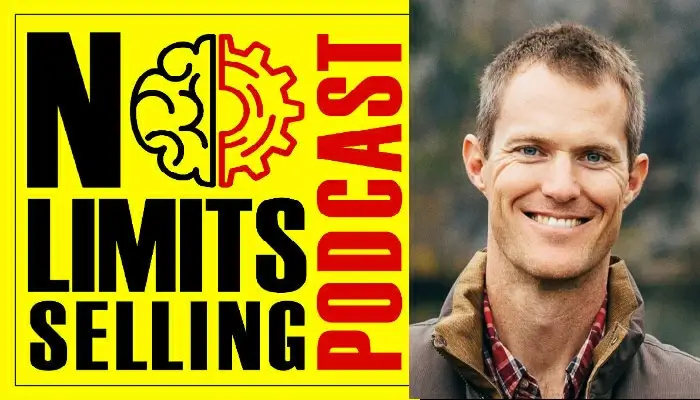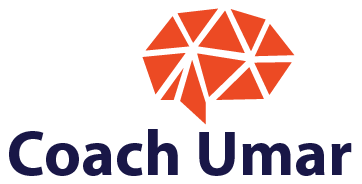The Importance of Company Culture by Brandon Bruce
Brandon Bruce grew up in a tiny California town of 800 people where he only had one classmate at a school with no running water. He went from these humble beginnings to now co-founding and growing Cirrus Insight to $12 million in annual revenue, 65 employees, and #41 on the Inc. 500 list. This podcast is about the importance of company culture.
Cirrus Insight is the highest rated sales platform of all-time for perfectly connecting Gmail and Outlook with Salesforce. Since launching in 2011, it’s been a roller coaster of success and setbacks, and Brandon’s philosophy for operating Cirrus is similar to his love of competing in 500+ mile ultra-endurance races - you aren’t going to win at the start or in a sprint at the end. Success is a war of consistency and persistence, and he has always enjoyed that.
Brandon has grown Cirrus as a lightly-funded distributed company via scrappy tactics in the same industry as billion-dollar software companies and competitors with tens of millions in funding. Today, Cirrus is in the middle of their biggest challenge yet - pivoting for the first time in seven years after losing their primary marketing channel as the #1 app on the Salesforce AppExchange.
Podcast Highlights:
- Hire employees who want to be founders. They bring passion to the job
- Crowdsource new ideas from your clients that way become more relevant
- Hire generalists because they can wear many hats

Contact Brandon:
- Website
[EDITOR’S NOTE: This podcast is sponsored by No Limits Selling. It is a fun, fast-paced podcast that delivers hard-fought business advice that you can implement today to improve your sales and performance]
Interested In Our Real Estate Coaching Services? Explore Our Website: Link
Feeling Not Well Today? You Can Use Our Mindset Boosters App To amp Up Your Mood: Link
Find us on Social Media:
LinkedIn | Facebook community | Instagram
Like what do you listen to? Subscribe to our podcast!
Ready to become fearless? We can help you become fearless in 60 days so you accomplish more in your career Schedule A 15 min Call with Umar
Summary
A Journey from Competitive Cycling to Successful Entrepreneurship
In a recent episode of the No Limits Selling podcast, Brandon Bruce, co-founder and COO of Cirrus Insight, shared his journey from a small-town upbringing to becoming a successful entrepreneur. His story is a testament to the power of persistence, the importance of understanding customer needs, and the value of a strong company culture.
Early Life and Education
Bruce's journey began in the small town of Los Olivos, California. A competitive cyclist in his youth, he learned early on the value of discipline and hard work. His academic pursuits led him to study History and Philosophy in college. Bruce credits these subjects for teaching him how to think, argue, and write effectively - skills that would later prove invaluable in his entrepreneurial journey.
The Birth of Cirrus Insight
Bruce's entrepreneurial spirit led him to co-found Cirrus Insight, a plugin for Gmail and Outlook that seamlessly integrates Salesforce into the user's inbox. Cirrus Insight was one of the first apps to be featured in the Salesforce AppExchange. The company's innovative approach to simplifying customer relationship management (CRM) helped it grow rapidly, reaching an impressive $12 million in revenue without any external funding.
The Importance of Company Culture
As with any fast-growing company, Cirrus Insight faced its share of challenges. Bruce candidly discusses the difficulties of scaling a business, emphasizing the importance of maintaining a strong company culture and staying true to the company's values. He believes that a company's culture is its backbone, providing stability and direction during periods of rapid growth and change.
Sales Techniques and Customer-Centric Approach
Bruce also shared his insights on effective sales techniques. He advocates for persistence, consistent follow-ups, and building strong relationships. However, he believes that the most crucial aspect of sales is understanding the customer's needs and providing value. This customer-centric approach has been a key factor in Cirrus Insight's success.
Book Recommendations and Advice for Entrepreneurs
Bruce recommends "The Goal" by Eliyahu M. Goldratt and "The Hard Thing About Hard Things" by Ben Horowitz for anyone seeking to understand the intricacies of business and management. His advice for entrepreneurs is to focus on their strengths and hire people to handle areas where they may lack expertise. He also emphasizes the importance of enjoying the journey, not just the destination.
Looking Ahead: Future Plans and Ventures
Bruce is not one to rest on his laurels. He is already looking forward to new projects and opportunities, including a new venture called "FileVine," a case management software for attorneys. His story serves as an inspiration for other entrepreneurs, reminding us that with persistence, a customer-centric approach, and a strong company culture, there are truly no limits to what can be achieved.
Questions & Answers
Who is Brandon Bruce?
What is Cirrus Insight?
What challenges did Brandon Bruce face while scaling Cirrus Insight?
What sales techniques does Brandon Bruce recommend?
What books does Brandon Bruce recommend for understanding business and management?
What advice does Brandon Bruce have for entrepreneurs?
Don’t miss this opportunity to transform your real estate career with one-on-one coaching. As an experienced real estate coach, I, Umar Hameed, am dedicated to helping you unlock your full potential and achieve your real estate goals. To learn more about who am I and my clients ↓
If you’re ready to take the next step, book an appointment with me today and begin your journey toward success in the real estate industry.
